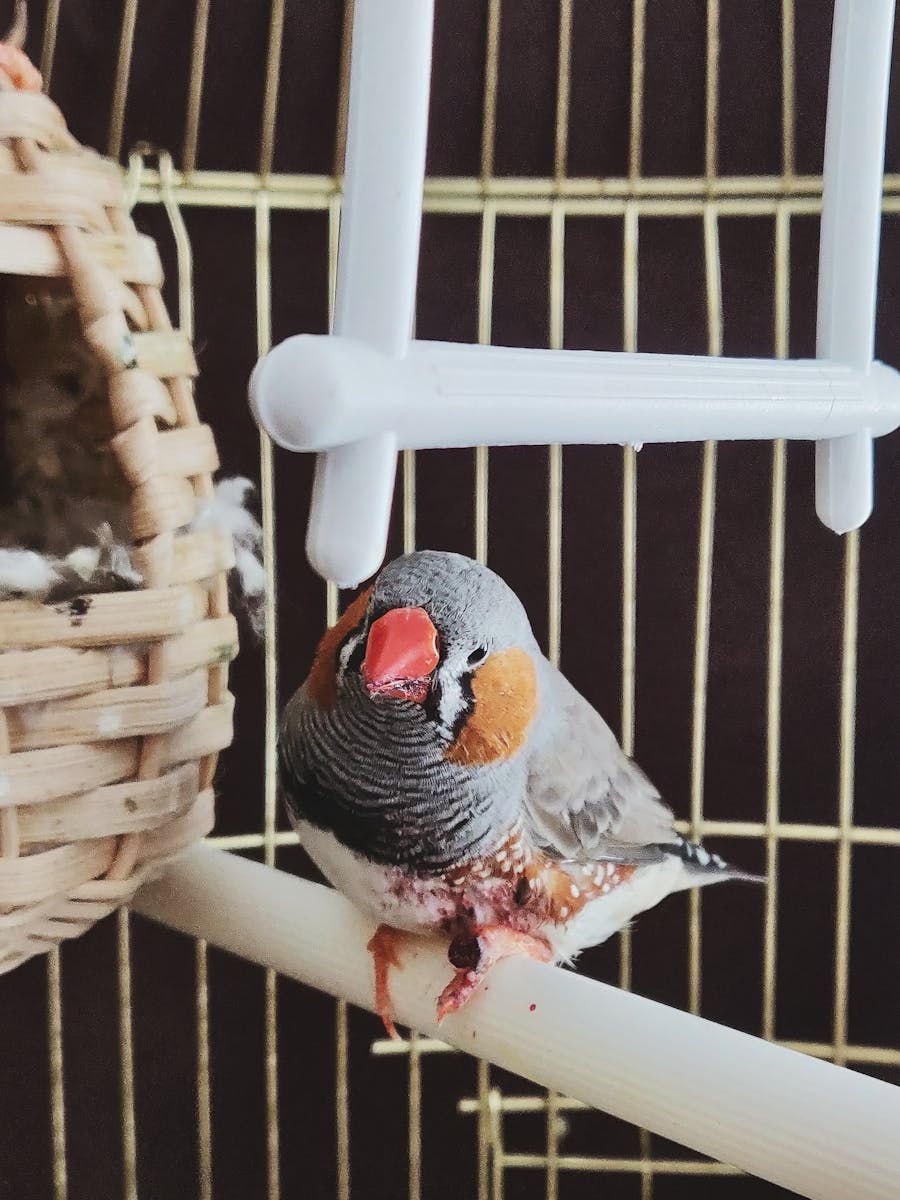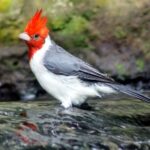Changing bird toys regularly is necessary to keep your feathered friend happy and mentally stimulated. Bird toys should be rotated every 2-4 weeks to maintain your bird’s interest and engagement. Rotating toys not only keeps things exciting but also helps prevent the buildup of wear and tear, ensuring a safe play environment for your bird.
Birds, being highly intelligent creatures, can become easily bored with their toys. Observe your bird’s behavior to know when they lose interest in a particular toy. Introducing new toys or reintroducing old ones after giving them a break can provide your bird with new challenges and entertainment, keeping their environment dynamic.
Safety is also crucial. Regularly inspect toys for any damage such as frayed ropes, broken parts, or discoloration. Removing damaged toys promptly protects your bird from potential harm. By maintaining a clean and safe environment with a variety of stimulating toys, you support your bird’s overall well-being.
How Often Should I Replace My Bird’s Toys and Perches
Toys and perches can collect dirt and bacteria, so it’s best to replace them periodically. Perches should be replaced every 6 to 12 months. Wood, wicker, and bamboo are hard to clean and sterilize because they are porous. Toys made of rawhide, rope, or fabric should be replaced every two to six months.
Creating an Engaging Environment for Your Feathered Friend
Why Changing Bird Toys Matters
Bird toys aren’t just for fun. They provide essential mental and physical stimulation for your feathered companion. Swapping out toys regularly helps prevent boredom, encourages natural behaviors, and keeps your bird happy and healthy.
General Recommendations
Most experts suggest rotating your bird’s toys on a weekly or bi-weekly basis. However, the ideal frequency can vary depending on several factors:
Bird Species and Personality
Different bird species have varying levels of activity and destructive tendencies. Highly active and playful birds might need more frequent toy changes than calmer species. Observe your bird’s behavior and adjust the schedule accordingly.
Toy Type and Durability
The type of toy also plays a role. Sturdy toys made of durable materials may last longer than softer or more destructible ones. Consider the toy’s construction and how quickly your bird tends to dismantle it when deciding when to replace it.
Signs of Boredom
Keep an eye out for signs that your bird is getting bored with their toys. These signs might include reduced interaction with the toy, excessive chewing on cage bars, or plucking feathers. If you notice these behaviors, it might be time for a change of scenery.
Toy Rotation Schedule
To make toy rotation easier, consider having a set of toys in rotation:
| Set | Purpose | Toys |
|---|---|---|
| Set 1 | Active Play | Swings, climbing toys, interactive toys |
| Set 2 | Foraging | Puzzle toys, hidden treat toys |
| Set 3 | Chewing and Preening | Wood, rope, leather toys |
Rotate these sets weekly or bi-weekly, giving your bird new things to explore and enjoy.
A Few Extra Tips
- Introduce new toys gradually. Don’t overwhelm your bird with too many new toys at once. Add a few new items to their existing collection and observe their reactions.
- Disinfect and clean toys regularly. This prevents the buildup of bacteria and keeps your bird healthy.
- Don’t forget about perches. Perches also contribute to your bird’s environment. Consider varying the size, shape, and texture of perches to keep things interesting.
Key Takeaways
- Rotate bird toys every 2-4 weeks.
- Inspect toys regularly for safety.
- Introduce new toys to prevent boredom.
Maintaining a Clean and Safe Environment
Maintaining a clean and safe environment for your pet birds is essential. This involves regular cleaning, disinfecting toys and accessories, and assessing their condition to ensure safety.
Routine Cleaning and Disinfection
To keep bird toys clean, follow a consistent cleaning schedule. Use soap and hot water to wash toys, ensuring all surfaces are scrubbed. For extra disinfection, rinse with a diluted hydrogen peroxide solution or use bird-safe cleaners. Avoid strong chemicals that can harm birds.
Steps:
- Remove toys from the cage.
- Soak in soapy water.
- Scrub thoroughly to remove dirt and fecal matter.
- Rinse with hot water and a mild disinfectant.
- Let dry completely before returning to the cage.
Material-specific tips:
- Plastic and acrylic toys: Dishwasher safe.
- Wood, rope, and leather: Hand wash gently to avoid damage.
- Metal: Ensure it is stainless steel to prevent rust.
Assessing and Replacing Bird Toys
Regularly inspect toys for wear and damage. Parrot toys and others can develop sharp edges, loose parts, or cracks that might cause injury. Replace toys with any visible issues immediately.
Rotation System:
- Rotate toys every few weeks to keep birds entertained.
- Introduce new types and textures, such as wicker or rawhide, to provide variety.
Safety Tips:
- Avoid small parts that can cause obstruction or accidents.
- Ensure all materials are non-toxic and safe for birds to chew.
- Check for any signs of infection or contamination in toys and maintain a clean environment to minimize risks.
These steps help create a safe, engaging, and clean habitat for pet birds.
Frequently Asked Questions
Changing bird toys and maintaining their environment is essential for their well-being. The following questions address how often to replace toys, perches, and bedding to keep birds happy and healthy.
What is the recommended frequency for replacing bird toys to ensure safety and enrichment?
Bird toys should generally be replaced every 2-6 months. Inspect toys regularly for wear and tear, and replace any damaged toys immediately. Rotate toys every few weeks to maintain the bird’s interest and provide new challenges.
How regularly should bird perches be replaced for optimal avian health?
Replace bird perches when they show signs of wear or damage. Natural perches should be changed every few months to prevent contamination. Man-made perches might last longer, but checking them regularly is key to ensuring the bird’s feet stay healthy.
What is the best interval for cleaning bird toys to maintain a hygienic environment?
Bird toys should be cleaned once a week. Use bird-safe disinfectants and thoroughly rinse and dry the toys before returning them to the cage. Cleaning prevents the buildup of harmful bacteria and ensures a safe environment for the bird.
At what intervals should bird bedding be changed to promote a clean habitat?
Bird bedding should be changed at least once a week. Monitor the bedding for dampness, droppings, or food debris, and change it more frequently if it becomes soiled. Keeping the bedding clean helps prevent illness and maintains a healthy habitat.
Is there an annual guide for the number of times bird toys should be cycled out?
Although it varies by bird and toy type, bird toys should generally be cycled out about 3-6 times a year. This depends on the bird’s engagement and the toy’s condition. Regular rotation keeps the bird stimulated and interested in its environment.
What factors determine the necessity for changing bird toys in a domestic setting?
Several factors influence the need to change bird toys. These include the bird’s playing style, the material and durability of the toy, and how quickly the bird loses interest. Regular checks and observing the bird’s behavior help decide the right time for changes.






